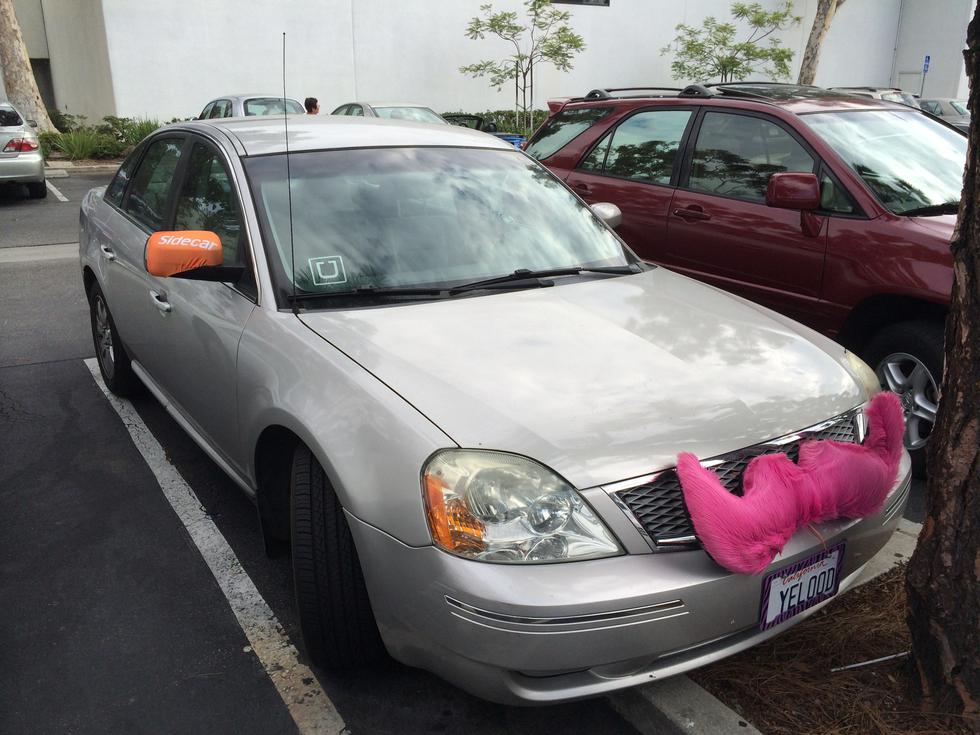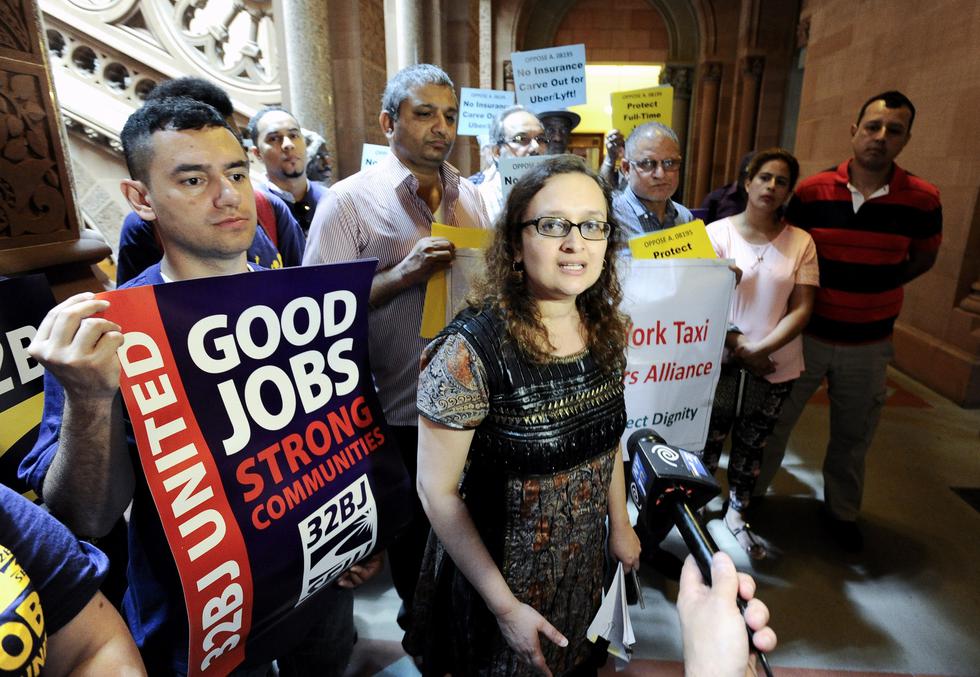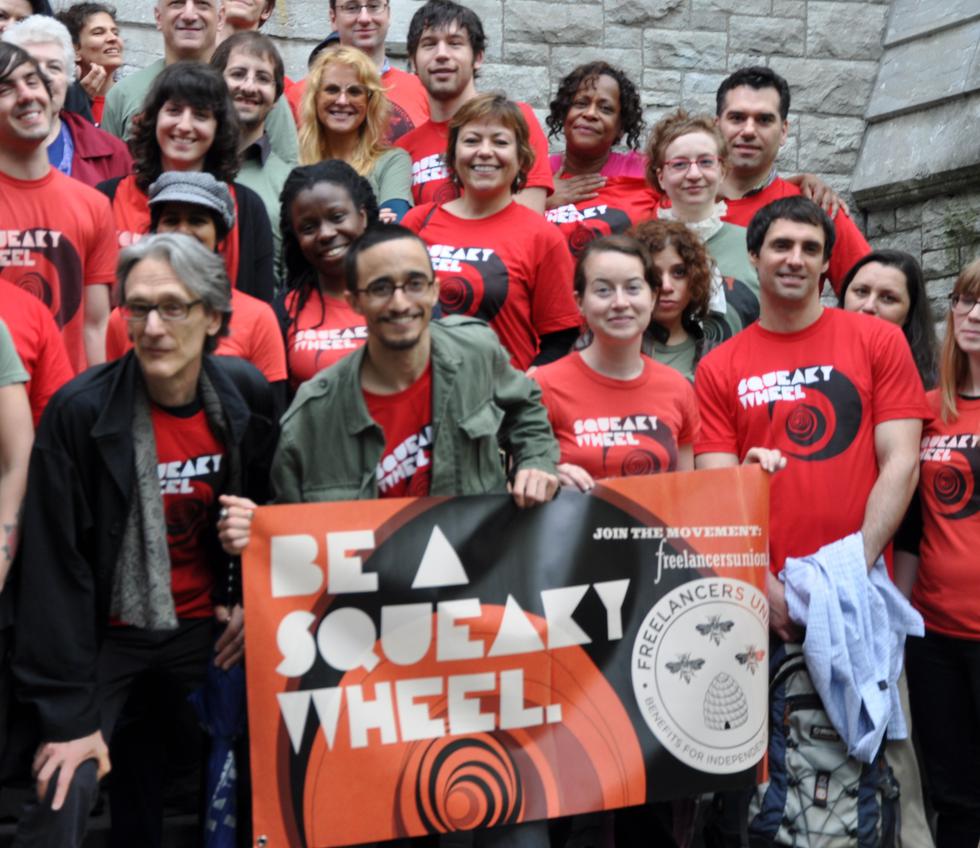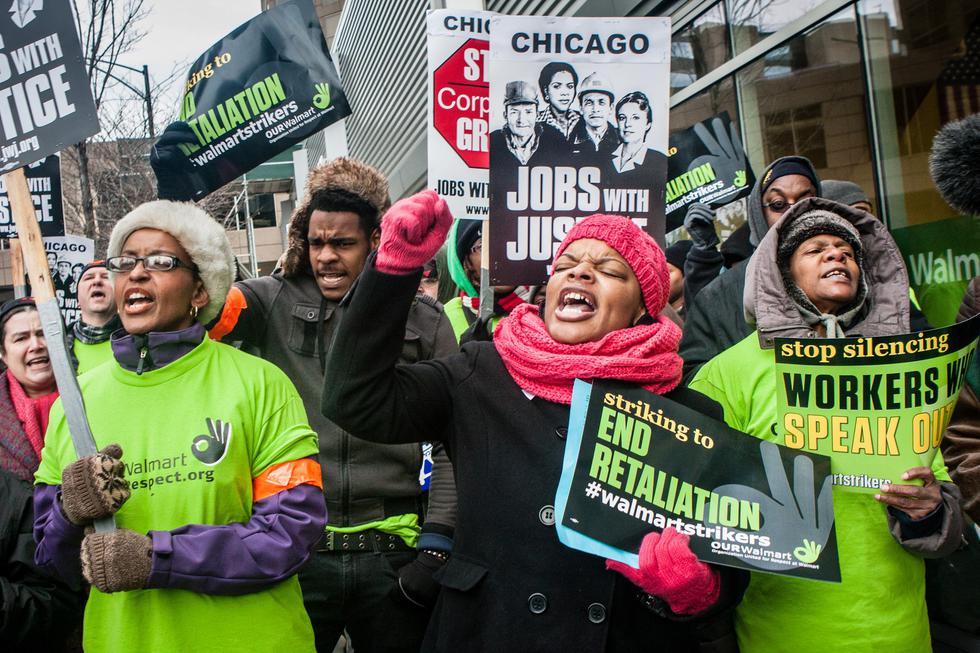This article appears in the Winter 2017 issue of The American Prospect magazine. Subscribe here.
Employers are increasingly dispensing with fixed working-time schedules, and turning to on-demand, just-in-time, and "gig" work instead. Some on-demand working time is involuntary: An employer imposes a fluctuating schedule on a worker who would prefer to have regular hours. Involuntary scheduling is becoming increasingly common in the retail, restaurant, hotel, and janitorial sectors, and even in some professional occupations. Other on-demand work is voluntary in the sense that workers choose their own hours or projects, but employers do not provide the benefits of employee status. These workers provide services that are often coordinated by computer platforms such as Uber, TaskRabbit, Mechanical Turk, and Handy. The nominally voluntary nature of their work schedules conceals a disparity of bargaining power, which tends to favor employers.
On-demand workers do not fit the mold of regular, full-time employees. Some have multiple employers, often with ad hoc schedules. Some work off-site, or move from site to site, and never even see their employer. Many work for subcontractors on a long and complex supply chain. Others are regularly on-site at a particular workplace and have specified hours but are classified by their employer as "independent contractors."
The various forms of on-demand work tend to defeat the protections of our system of labor regulation, which assumes that employees have regular payroll employment. Seemingly, unions are also not much help, since they, too, are based on the assumption of regular jobs. But if we dig a little deeper, there is a long history of unions protecting their members from employers' efforts to force workers to bear all the risks and costs of fluctuating demand. This is true in industries as varied as construction, airlines, hotels, and entertainment.
Some of these are unions that organize and collectively bargain under the terms of the National Labor Relations Board. But others, in the world of so-called alt-labor, use worker centers, associations, and other worker-empowerment strategies that are not technically unions. If the Trump administration changes rules and laws to weaken traditional unions-which it is almost certain to do-these new strategies become that much more important.
The Challenge of Just-in-Time Scheduling
Just as airlines adopted variable pricing in the late 1980s to fill all the seats on planes, firms in the retail, restaurant, and hotel sectors in the last ten years have adopted complex staffing algorithms to predict customer flows and minimize personnel costs. Large companies in those sectors use complex software provided by specialty workforce management firms to predict their staffing needs so that they never have more employees than necessary on any given day. As a result, those employers give their workers schedules that can change on short notice. One leading staffing firm claims it can predict staffing demand in a retail store down to 15-minute intervals so that there is never excess staff, even for a few minutes.
With just-in-time scheduling, an individual worker in any given week could work five hours on Monday, four hours on Tuesday, none on Wednesday, seven on Thursday, none on Friday or Saturday, and four on Sunday. Moreover, that individual might not know until the prior week what her schedule will be for the week coming up. A New York Times editorial in 2015 reported that "[a]ccording to federal data, 66 percent of food service workers, 52 percent of retail workers and 40 percent of janitors and house cleaners have at most a week's notice of their schedules."

Just-in-time scheduling is brutal for employees. Employees in the retail sector complain that they cannot plan their lives. It becomes impossible to arrange child care when one doesn't know what hours one will be working. Moreover, because most retail, restaurant, and hotel work is part-time and low-paid, those workers often want to take second jobs or enroll in training programs but cannot do so because of their constantly shifting and unpredictable hours.
Just-in-time scheduling is particularly widespread among younger workers. A 2014 study of adults between the ages of 26 and 32 found that 41 percent of hourly workers reported that they only learn of their weekly work schedules one week or less in advance, and the majority have schedules fluctuate each week. Low-paid part-time workers have the highest likelihood of experiencing short notice and fluctuating hours. The occupations in which workers were most at risk were food-service workers (90 percent), retail workers (87 percent), home health-care workers (71 percent), and janitorial and housekeeping workers (66 percent).
Some worker advocacy groups, including the Retail Action Project, Jobs With Justice, and the National Partnership for Women and Families, have attempted to address the problem of short and unpredictable hours by promoting fair-scheduling legislation at the local, state, and federal level. The City of San Francisco adopted an ordinance in 2014 that requires employers to give employees two weeks' notice and to compensate the workers for last-minute changes. Proposed federal legislation, the Schedules that Work Act, would require employers in the retail, hotel, and cleaning industries to give workers two weeks' notice, and to pay the affected employees for changes on short notice.
Business groups oppose fair-scheduling legislation, claiming it deprives them of necessary flexibility. Because business groups may well defeat fair-scheduling legislation in all but the most progressive localities, it is important to consider another approach. Unions have long been a force for greater worker control over scheduling.
Unions and Schedule-Bidding
Airlines have unpredictable and frequently changing demand for workers. Weather conditions and mechanical problems can cause flight cancellations or delays on very short notice. Moreover, airlines frequently make adjustments to their flight routings and equipment deployment, so staffing levels fluctuate.
In the face of the airlines' variable staffing needs, the flight attendants unions, when they first formed in the 1940s, devised a job-bidding system to give the workers some stability in their work schedules. Under the bidding system, the airlines are required to prepare a roster of assignment schedules each month that are termed "lines of flying." The lines are composed of multiple "trips"-flight sequences that begin and end at the worker's home base. The sequences can be simple round trips, or they can be a sequence of flights that spans several days and involves flights to a series of cities. The workers are presented with the available lines each month, and bid for the ones that offer the schedules they prefer.
Flight attendants who want to be home every night bid for lines that have flights that leave and return on the same day, such as an East Coast shuttle. Those who want to be home for a special occasion, such as a child's birthday, or who want to take a class that meets on a certain day each week bid to have those dates off. Some might want to work early in the month and have time off later in the month. Each can bid for a schedule package that meets his or her priorities. Also, some lines involve more hours of work than others and offer additional pay. Thus, those who want to maximize their month's earnings can bid for the more lucrative trips. All the bids are submitted each month and awarded on the basis of seniority.
Airlines also need to have some workers on call for last-minute changes. The unions' contracts provide for some lines to include specified times a flight attendant will be on call, for which they are paid a minimum hour guarantee when they are on call. The contracts limit the amount of on-call work.

The flight attendants unions' schedule-bidding system has worked for many years, with occasional negotiated modifications. It has enabled flight attendants to achieve predictability in their schedules and plan their lives accordingly, even when the employers' staffing needs are unpredictable and variable, while serving the airlines' need for reliable staffing. The point is that the entire burden of fluctuating schedules is not placed on the workers.
The flight attendant bidding model could be adapted to other industries that have variable staffing needs. For example, retail stores could offer their workers an array of specified schedule options each month, for which the workers would bid. Some schedule options could include a limited amount of additional "on-demand time"-a pre-specified time period during which a worker would have to be available if called in with 24-hour notice. The workers who had schedules that include on-demand time would be paid their regular pay if they were called in, or they would be paid something for the hours they were required to be on demand. This would enable retail workers to plan their lives and yet enable the retailers to have the flexibility they claim they need. The same computer algorithms that make it so easy for employers to vary workers' schedules could be modified to give workers more of a say. This is not a technical issue, but a question of bargaining power.
Unions for Gig Workers
Gig work raises many difficult issues under labor laws. Because these workers choose their hours and provide their own tools (such as Uber drivers' cars), the companies claim the workers are independent contractors, not employees. Yet, unlike conventional independent contractors, gig workers are subject to the selection, direction, monitoring, and discipline of their employing entity.
There is currently litigation in many state and federal courts on the issue of how gig workers should be classified. In June 2015, the California Commissioner of Labor found that an Uber driver was an "employee" and entitled to the benefit of state labor laws requiring expense reimbursement. In a similar vein, in the summer of 2016, the New York Labor Department ruled that two Uber drivers were entitled to workers' compensation under New York law. Several cases are also pending in federal courts on whether gig workers are employees or independent contractors under federal employment laws. There are also cases pending before the National Labor Relations Board that pose the question of whether Uber drivers or Postmates delivery workers are entitled to the National Labor Relations Act's protection for engaging in collective action. Last October, the employment tribunal in the U.K. ruled that Uber drivers are employees and entitled to minimum wage, rest breaks, and holiday pay.
If gig workers in the United States are found to be independent contractors rather than employees, they cannot benefit from federal and state laws guaranteeing overtime pay, minimum wages, expense reimbursement, rest breaks, healthy and safe working conditions, workers' compensation, unemployment compensation, employer contributions to Social Security, protection against discrimination, or the right to form a union. Moreover, as independent contractors, any collective action they might take to change their working conditions could make them liable for antitrust violations.
Although gig workers value control over their time, many have raised serious complaints about their jobs and working conditions. For example, despite earning decent money at the outset, many Uber drivers complain that after six months of driving 400 to 500 miles a day, their cars require such expensive repairs that their actual earnings are close to minimum-wage level. Drivers also complain that Uber periodically cuts the rates it charges customers and increases the percent it takes, thereby reducing drivers' incomes. They also complain that the customer ratings system is tyrannical, forcing them to accommodate rude, abusive, and drunken customers just to avoid getting penalized for a low rating.
Some labor policy analysts and academics have argued that workers who get task assignments from computer platforms represent a new type of worker that fits neither the category of employee nor of independent contractor. For example, Seth Harris and Alan Krueger used the example of Uber drivers to argue that there should be a new category called "independent workers" for platform workers, who would be entitled to some of the rights but not all the protections available to employees. Ross Eisenbrey and Lawrence Mishel of the Economic Policy Institute disagree. They challenge the Harris-Krueger analysis and maintain that Uber drivers fit within the existing categories of employees and should therefore come under existing labor laws. Former NLRB General Counsel Craig Becker argues that adding a new category such as independent worker does not solve any problem, but rather compounds the classification problem. If there were three categories instead of two, he contends, there would be more disputes and litigation about which category an individual working relationship fits.
The controversy over the proper classification of Uber drivers casts a shadow over efforts for all gig workers to unionize. If the litigation is resolved in favor of employee status, however, there are models of unionization and organization that could preserve the drivers' control of their working time and freedom to drive for more than one service, yet also address their other concerns.
Embedded Contract Bargaining
Gig work has, in fact, a lot in common with project work by craft workers in fields such as construction, who are hired for a specific job but may not have an ongoing relationship with the entity that employs them. In the building trades, a union contract does not guarantee hours of employment, but it does govern wages and benefits, as well as apprenticeship and other elements of work.
A successful, lesser-known model for sporadic but recurring project work can be found in film and television industry trades, such as lighting design, sound engineering, or on-location transportation. The International Alliance of Theatrical Stage Employees (IATSE) engages in a form of collective bargaining that I call "embedded contract bargaining." It works as follows: The union negotiates a Basic Agreement between an IATSE local and an association of theaters that spells out a few terms of the labor-management relationship, and for certain others, requires employees covered by it to make their own deals. The Basic Agreement includes union recognition, as well as terms such as health and safety at theater workplaces, employer provision of housing during out-of-town production assignments, transportation costs for out-of-town locations, and employer contributions to the joint pension and health funds. It also sets minimum pay per day worked. However, the agreement contains no seniority, just cause, or arbitration provisions-no provision for job security at all. To the contrary, it assumes that workers will be hired on an as-needed basis, working from job to job, sometimes more than one job at a time.

One significant aspect of the IATSE Basic Agreement is that it includes another embedded agreement, a one-page agreement, negotiated between the theater employer and the individual employee, that sets the level of pay and other terms relating to compensation for the employee on the specific job. The embedded agreement also authorizes a dues check-off on behalf of the relevant IATSE local.
Such contracts do not guarantee jobs, nor a specific level of income, but the minimal terms and area-wide benefit fund ensure workers a living wage and decent benefits. Embedded contract bargaining, in this model, could provide some protection for labor standards for platform and gig workers, if they could amass enough power to compel employers to sign agreements.
Associational Unions
Even if gig workers are not ultimately determined to be "employees," there have been attempts by drivers to form organizations that give them some elements of union representation. For example, in New York City, a large number of Uber drivers have joined the New York Taxi Workers Alliance (NYTWA), an organization that maintains a school for drivers, assists drivers with traffic tickets, and lobbies the Taxi and Limousine Commission on behalf of drivers. The NYTWA is engaged in litigation seeking to get Uber drivers classified as employees under both federal employment laws and the National Labor Relations Act.
In December 2015, the City of Seattle enacted an ordinance to permit for-hire drivers to unionize and bargain collectively for better compensation rates and other contract terms. The stated goal of the ordinance is "[l]eveling the bargaining power between for-hire drivers and the entities that control many aspects of their working conditions." It is based on the city council's finding that:
Business models wherein companies control aspects of their drivers' work, but rely on the drivers being classified as independent contractors, render for-hire drivers exempt from minimum labor requirements that the City of Seattle has deemed in the interest of public health and welfare, and undermine Seattle's efforts to create opportunities for all workers in Seattle to earn a living wage.
The Seattle ordinance does not decide the question of whether the drivers are independent contractors or employees. Rather, it establishes a procedure for drivers to select an exclusive driver representative (EDR) who will be the sole representative of for-hire drivers operating in the city for a particular on-demand company. The director of the city's Finance and Administrative Services receives petitions from groups seeking designation as the EDR, and determines whether a particular company has sufficient support among drivers for that company to be so named. Once an EDR is certified, the EDR and the company hiring those drivers-the "driver coordinator"-are required to meet and bargain over vehicle standards, safe driving practices, the nature and amount of payments to be made, minimum hours of work, and other conditions. After reaching agreement, the parties submit the agreement to the director for review, and if it is found to be compliant, then it is final and binding on all parties. If the parties fail to agree, then the ordinance provides for interest arbitration.
Last March, the U.S. Chamber of Commerce challenged the Seattle ordinance in court. In its complaint, it contended that the ordinance violated the Sherman Antitrust Act by authorizing for-hire drivers to form illegal cartels, and that it violated the National Labor Relations Act by regulating matters that lie within the exclusive jurisdiction of the National Labor Relations Board. On August 9, a federal district judge dismissed the lawsuit on the grounds that the ordinance had not yet been implemented so the chamber had not been harmed by it, and hence lacked standing to sue. The judge left the door open for the chamber to re-file the suit at a later time.

The City of Seattle is currently drafting regulations for the implementation of the ordinance, so it has not yet gone into effect. Once it does, litigation will undoubtedly resume. The antitrust and preemption issues posed by the ordinance are complex, and it is not clear how they will be decided. However, if the ordinance is ultimately upheld, it opens the door for a new form of unionism that could be meaningful for gig workers.
Freelance Workers
Yet another group of voluntary on-demand workers are freelancers. Unlike gig workers, freelance workers are truly independent contractors. They create a good or a service at their own expense, find a customer, decide what to charge, and keep the proceeds. They work for themselves and do not usually have employees. They include commercial artists, writers, editors, computer programmers, and other technological fields.
Despite their autonomy, freelance workers experience several kinds of problems. First, as individual producers, they have difficulty obtaining pension and affordable health insurance because they are not eligible for favorable group rates. Second, as independent producers, they rely on the integrity of their contracting counter-parties to receive their pay. The most prevalent complaint of freelance workers is that the entities with which they contract often delay paying them or fail to pay altogether. Yet freelance workers do not have a simple way to recover their fees. Because they are not "employees," they are not covered by the Fair Labor Standards Act. While they can go to court for breach of contract, doing so is expensive, time-consuming, and often sullies their reputation and prevents them from getting future work. Furthermore, they often work without a written contract, making it practically impossible to prevail.
The Freelancers Union, based in New York City, has taken the lead in addressing these concerns. The Freelancers Union is not actually a union, but is a worker center that advocates on behalf of freelance workers. One of its primary activities is operating a health insurance and pension fund specifically designed for freelancers, giving them access to favorable group insurance rates and enabling them to obtain affordable social protection.
The Freelancers Union also lobbies for legislation on behalf of freelancers. On October 27, 2016, it achieved a major victory in the New York City Council with the enactment of the Freelance Isn't Free Act. The act provides that anyone utilizing a freelancer's services must give them a written contract if the job is for more than $800 over four months, and that anyone who fails to pay on time is liable for double damages.
Although legislation like the Freelance Isn't Free Act is an enormous step forward for freelance workers, it may not solve all the problems of nonpayment. To benefit from the act, freelancers still must go to court to collect their fees, and many may be reluctant to do so because of time, expense, and reputational considerations.
One service a workers' association could provide to freelance workers would be to operate their own dispute resolution system to provide a fair and accessible forum for processing claims. An example can be found in the Independent Film and Television Alliance (IFTA), an organization that includes screenwriters, film producers, directors, and others in the industry. IFTA is a trade association and not a union. It lobbies on behalf of the independent film industry, runs an annual marketplace where filmmakers, film producers, and film marketers come together, and operates an arbitration system for resolving disputes within the industry. IFTA has developed detailed arbitration procedures and maintains a roster of carefully selected arbitrators from around the world. It acts as the administrative agent for the arbitrations-receiving pleadings, setting timetables, deciding discovery requests, and resolving disputes about how the procedures should operate. This service is invaluable to its members because it enables them to resolve disputes without generating the expenses or ill-will that would otherwise result from a formalized legal proceeding. Many of the organization's members claim that the dispute resolution system is the primary benefit the organization has to offer. If organizations of freelance workers offered fair, inexpensive, and expeditious arbitration to resolve payment disputes, it would help make a reality of the fact that "freelance isn't free."
The rise of new types of work relations poses a challenge to our existing model of unionization. However, new forms of organization can be developed, and older ones restructured, to address today's transient, casualized, and precarious workforce. Organization is necessary not only to protect the individuals involved, but also to constitute a voice for workers in the political process. As the experience with the airlines, entertainment unions, and unions representing freelancers has shown, the idea that new forms of technology such as digital platforms must invariably weaken worker bargaining power is a convenient myth. Efforts to convert employment to on-demand work is an old story, and workers regain rights whenever they are strong enough to organize.
With the very rich becoming ever richer, money translates into power. The tilt of income and wealth has gone hand in hand with banking deregulation, tax code changes, relaxation of antitrust laws, and the weakening of worker protections. The labor movement is the only institution with the potential to counter this power shift and provide new forms of worker protection to match new forms of work organization.




